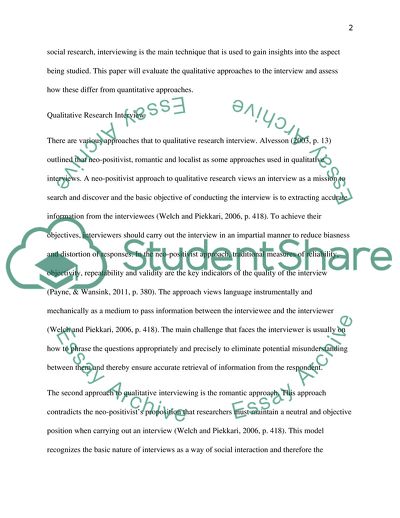Cite this document
(Approaches to Qualitative and Quantitative Interviews Essay, n.d.)
Approaches to Qualitative and Quantitative Interviews Essay. https://studentshare.org/sociology/1768727-what-are-qualitative-approaches-to-the-interview-how-do-these-differ-from-quantitative-approaches
Approaches to Qualitative and Quantitative Interviews Essay. https://studentshare.org/sociology/1768727-what-are-qualitative-approaches-to-the-interview-how-do-these-differ-from-quantitative-approaches
(Approaches to Qualitative and Quantitative Interviews Essay)
Approaches to Qualitative and Quantitative Interviews Essay. https://studentshare.org/sociology/1768727-what-are-qualitative-approaches-to-the-interview-how-do-these-differ-from-quantitative-approaches.
Approaches to Qualitative and Quantitative Interviews Essay. https://studentshare.org/sociology/1768727-what-are-qualitative-approaches-to-the-interview-how-do-these-differ-from-quantitative-approaches.
“Approaches to Qualitative and Quantitative Interviews Essay”. https://studentshare.org/sociology/1768727-what-are-qualitative-approaches-to-the-interview-how-do-these-differ-from-quantitative-approaches.


